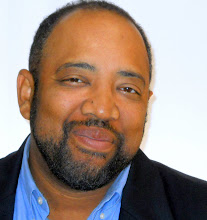I need to start this blog by saying that I grew up loving professional football, but in the last few years that I have begun to sour on the hypocrisy of college football and the brutality of the NFL, both of which receive a semi-free pass from a mostly compliant press corp.
The average NFL career lasts 3.5 years. Of the 100,000 high school kids who strap on pads every year, only 0.2 percent will have the pleasure of experiencing such a short career. These statistics are courtesy of the NFL Players Association. It’s hard to imagine another profession that so callously discards men after they have outlived their usefulness.
For the players, part of the allure is the money, the million dollar contracts. Only, most athletes struggle to hold onto those riches. A March 2009 Sports Illustrated article reported that:
- By the time they have been retired for two years, 78% of former NFL players have gone bankrupt or are under financial stress because of joblessness or divorce.
To do the math, the average player logs three and half year in the NFL and two years later, he’s a financial wreck. At least the guy has his college education, right? No, absolutely not.
The graduation rate for kids in big time football and hoops programs is lower than the national average, which tells you those boys are hitting something other than the books. Everyone in the system knows these kids don’t attend four year degree school with the notion of coming out of it holding onto a diploma. You only need to listen to one press conference to realize most of these kids would have trouble with English Lit 101. I could go on, but the Root’s Deron Snyder has a really good take on the hypocrisy behind pretending these young men are student athletes.
The NCAA would have you believe that graduation rates are going up. Instead of spouting these numbers as gospel, can we point out that the NCAA only looks at kids have scholarships for four years? If the coaches think a freshman will not be good enough to make the team in his sophomore year, he isn't offered a scholarship for the sophomore year. I think you have to count those numbers in the dropout rate. They don’t help.
Well, so we’ve seen that the NFL doesn’t prepare its players for life out of the game financially and the colleges don’t give them the educational background they need to survive without football. But that’s not the biggest crime.
Depending on position, the average NFL retiree has a life expectancy 20 years less than the average man in America. In case you missed it the first time, yes that number is 20 years less.
And the quality of life is dramatically less. Those who live long lives will face knee and hip replacement surgery, an inconvenient truth the media has ignored.
Then there are the concussions. In light of aggressive reporting by the New York Times, the league has acknowledged concussions leave lasting damage. You can file that under things that are obvious unless you are trying to ignore them, like snow is cold and rain is wet.
When we attend movies, another entertainment venue, we employ a trick called suspension of disbelief to help us imagine that a car chase could happen on Fifth Avenue during rush hour in New York City or that aliens would want to phone home. During one particularly bad Christian Slater movie, my father once remarked, “There isn’t that much disbelief in the world to accept this plot.”
I feel that way about the NFL. I can’t look at it without thinking we are willingly sacrificing young men’s lives for our entertainment, and not just the guys who are who make it to the big time, but also the guys who work hard but aren’t good enough to play in the league.
Here’s is what I wonder: a thousand years from now, will archeologists look at football the same way will look at Roman gladiators and be appalled by how we let this happen?



